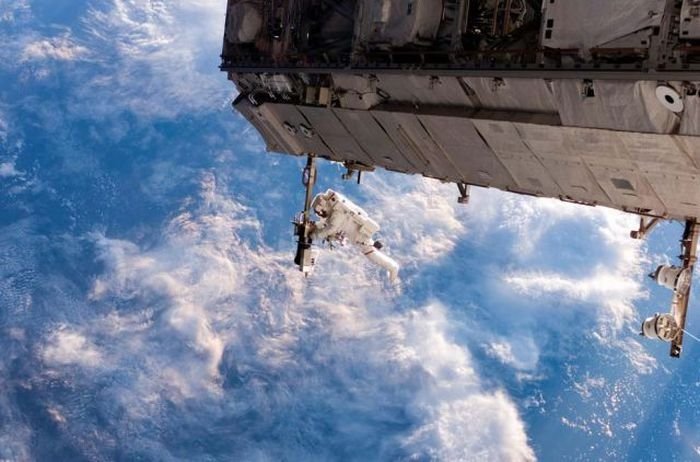|
|
Spacewalk
|
The Soviets' avionics technology was not as advanced as that of the United States, so the Voskhod cabin could not have been left depressurized by an open hatch; otherwise the air-cooled electronics would have overheated. Therefore a spacewalking cosmonaut would have to enter and exit the spacecraft through an airlock. By contrast, the Gemini capsule's avionics were designed so the cabin could be exposed to the vacuum of space when one of two large hatches was opened, so no airlock was required, and both the spacewalking astronaut and his companion command pilot were in vacuum during the EVA. Due to the different designs of the spacecraft, the American and Soviet space programs define the duration of an EVA differently. The Soviet (now Russian) definition is the time when the outer airlock hatch is open and the cosmonaut is in a vacuum. An American EVA begans when the spacewalking astronaut has at least his head outside of the spacecraft.
As they had with the first satellite and first man in space, the Soviets again stunned the world on March 18, 1965 with the first EVA (commonly referred to as a "space walk") performed by Alexey Leonov from the Voskhod 2 spacecraft, for 12 minutes outside the spacecraft. Leonov had no means to control his motion other than pulling on his 50.7-foot (15.5 m) tether. After the flight, he claimed this was easy, but his space suit ballooned from its internal pressure against the vacuum of space, stiffening so much that he could not activate the shutter on his chest-mounted camera.
At the end of his space walk, the suit stiffening caused a more serious problem: Leonov had to re-enter the capsule through the inflatable cloth airlock, 3.96 feet (1.21 m) in diameter and 8.25 feet (2.51 m) long. After his spacewalk, he improperly entered the airlock head-first and got stuck sideways. He could not get back in without reducing the pressure in his suit, risking "the bends". This added another 12 minutes to his time in vacuum, and he was overheated by 1.8 °C (3.24 °F) from the exertion. It would be almost four years before the Soviets tried another EVA. They misrepresented to the press how difficult Leonov found it to work in weightlessness, and concealed the problems encountered until after the end of the Cold War.
The first American spacewalk was performed on June 3, 1965 by Edward H. White, II from the second manned Gemini flight, Gemini 4, for 21 minutes, on a 25-foot (7.6 m) tether. White was the first to control his motion in space with a Hand-Held Maneuvering Unit, which worked well, but only carried enough propellant for 20 seconds. White found his tether useful for limiting his distance from the spacecraft, but difficult to use for moving around, contrary to Leonov's claim. However, a defect in the capsule's hatch latching mechanism caused difficulties opening and closing the hatch, which delayed the start of the EVA and put White and his crewmate at risk of not getting back to Earth alive.
|
|









